Estimated reading time: 6 minutes
There are many wonderful places to photograph birds in Africa. The Chobe River in Botswana offers out-of-this-world birding from the vantage of a customised photographic boat, creating minimal disturbance and putting you in a prime position to capture fantastic images. Close by, the Okavango Delta has several birding highlights throughout the year. Falling water levels in October expose sandbanks that attract nesting African Skimmers, huge noisy heronries rise and fall, and the summer rains bring exotic migrant species into the area. Further south, the bird list at South Africa's Phinda Reserve is so large that some say it offers the best birding in Africa!
Photographing birds, however, can be a hugely rewarding exercise or one of extreme frustration. Besides a great deal of patience, the most important considerations to bear in mind are the equipment you use, how you use it, and your guide’s knowledge - not only of the local environment but of the behaviour of the birds you're trying to photograph.
Using some of my images as examples, I've illustrated a few of the fundamentals behind bird photography.
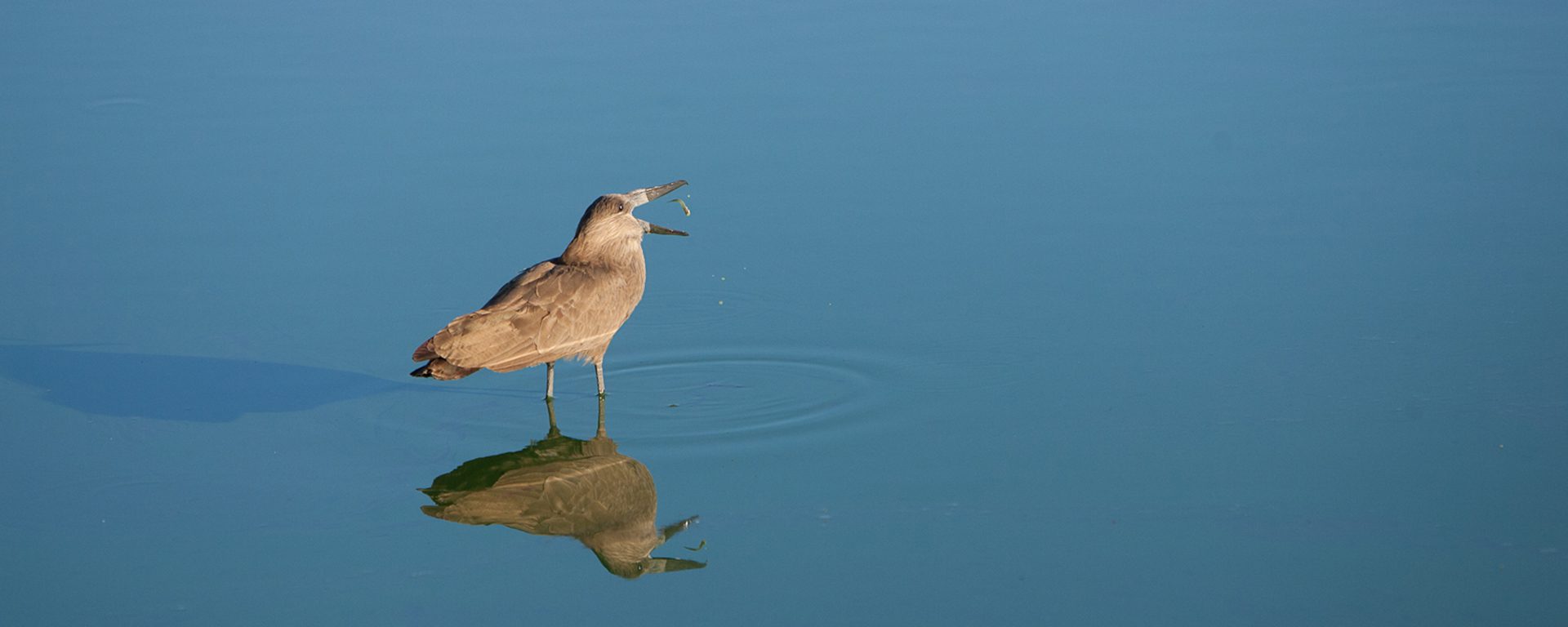
Hamerkop: A fish trap had developed in an Okavango Delta floodplain, always a major attraction for a host of waterbirds – even a couple of small crocodiles had joined in the feeding frenzy. On hearing about it, I positioned myself in a prime spot and armed with a lot of patience, I managed to capture this shot of a Hamerkop as it hunted for small fish.
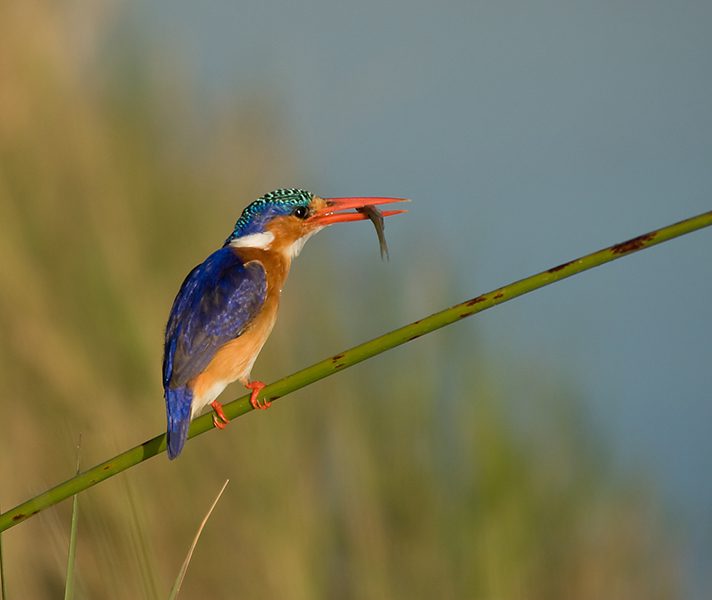
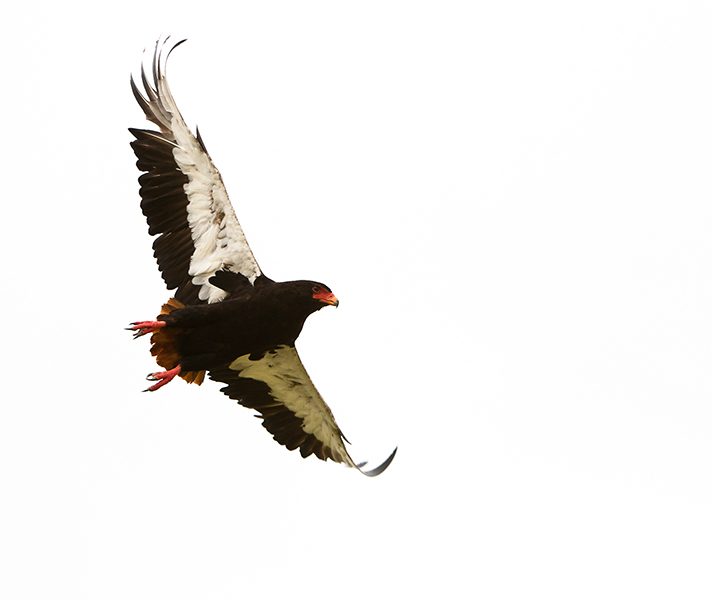
Malachite Kingfisher: Normally you would need at least a 600mm lens to get close-ups of these shy birds but by knowing my subject and local conditions, I was able to get this shot with a 300mm. The reason for this was that I often saw this kingfisher in a spot where vehicles and boats passed by every day. It had become used to these but was still wary of people on foot. I took a boat there one afternoon, climbed out and sat on the bank until the bird was used to my presence. After a while, the air was filled with a perfect golden glow and as I had a lot of light, I could use a low ISO and a relatively small f-stop.
Bateleur: A background can make or break an image. In this case, it was an overcast day though still bright, contrasting wonderfully with the striking red, white and black colours of the Bateleur. Seconds before I took this shot it had been perched in a tree; knowing that big birds tend to take off into the wind helped me anticipate its flight and enabled me to position myself in the right place to get this image.
Camera
An SLR camera is essential. The brand is largely irrelevant as manufacturers constantly compete with each other to produce the best camera bodies. Nikon and Canon are the most popular but Sony now has a line of SLRs that are producing excellent results as well.
There are two major considerations for your choice of SLR. The first is its ISO rating. This is the sensor’s sensitivity to low light – the higher the better. The second is the shutter’s frame rate. Firing off a rapid burst from a camera that can take ten frames a second will more likely capture the moment a bird takes off than one that only manages three frames a second.
Lenses
The longer the lens you have, the better your chances are of getting great bird photos. However, there are a few restrictions to consider, not least the prohibitive cost of lenses over 300mm.
A 600mm lens is great for birds but it has its drawbacks. Apart from its size and weight (and cost!), this lens needs to be held extremely still due to its large magnification. This means you need a Wimberley head or something similar to mount it on, plus the clamps to fix everything to a vehicle, boat or tripod. And considering most safaris involve flights on small planes with tight luggage restrictions, such a large lens quickly becomes impractical.
Convertors (magnifications of 1.4 or 2 are recommended) are a lightweight compromise. By using a 300mm 2.8 prime lens with a convertor fitted, you only lose one or two f-stops and have the extra zoom at a fraction of the size and weight.
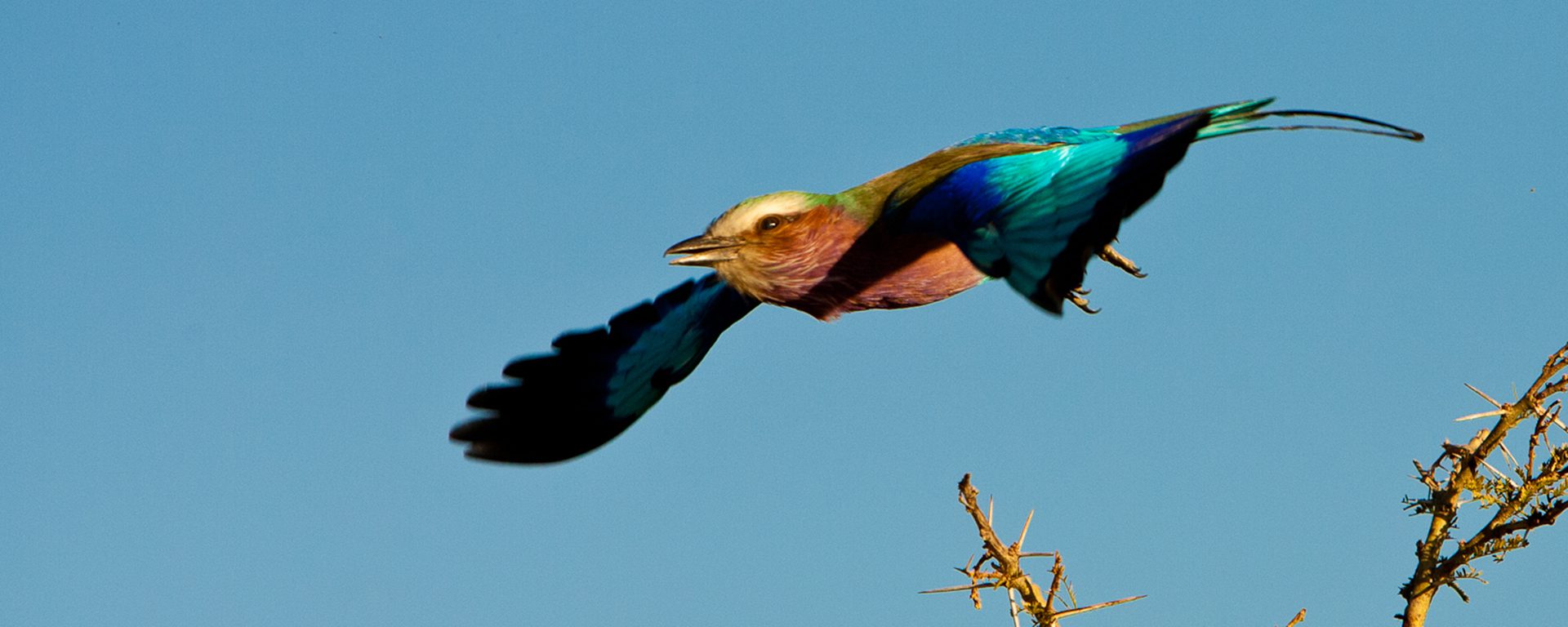
Lilac Breasted Roller: Commonly seen and fairly confident posers, these colourful birds always make an excellent subject. The trick to photographing them is to get a suitably neutral background to offset their brilliant plumage. Finding one in the soft light of late afternoon, I focused and waited until it took flight.
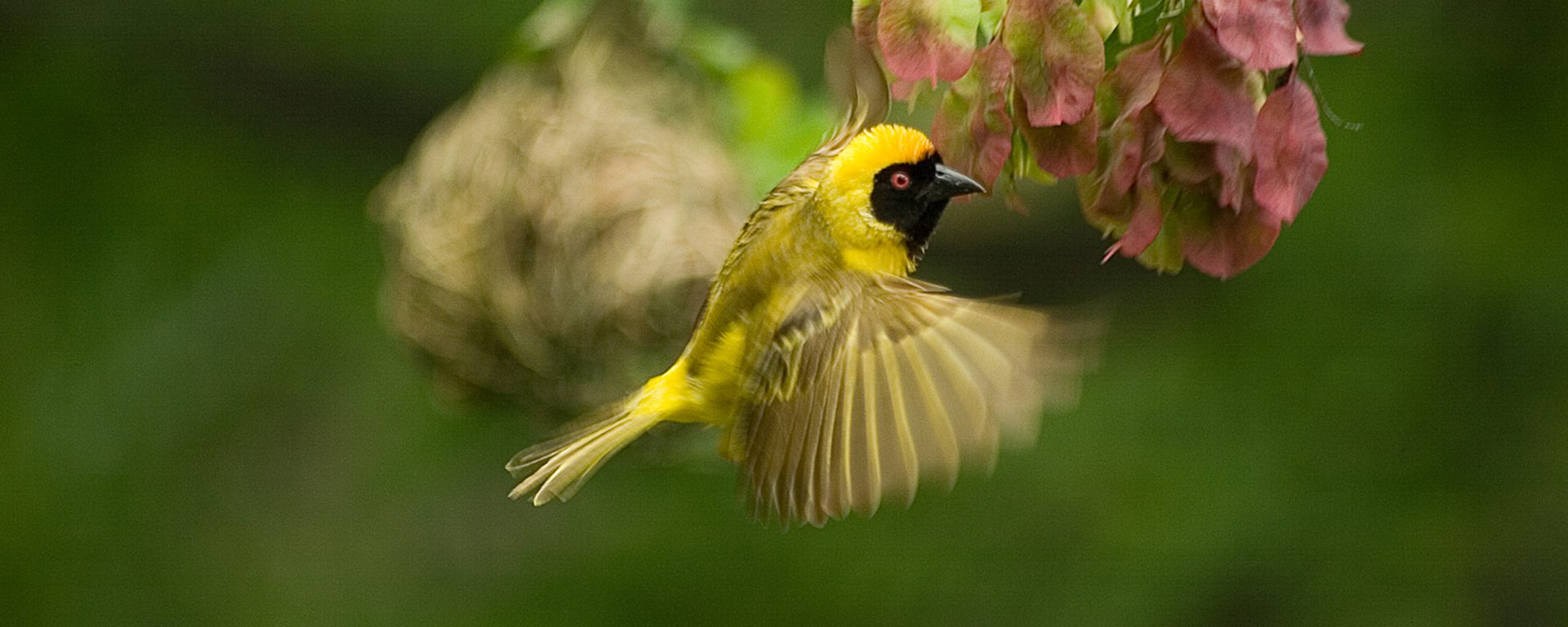
Masked Weaver: I had noticed a lot of weaver activity from the raised decks of Ongava Camp in Namibia and I wanted to get a shot of this male, engaged in a frenzy of nest-building. With the speed he was moving, I couldn’t hope to track him and get a shot in focus so I set my camera on a tripod and manually focused on the areas he kept flying to. As he flew into my viewfinder, I fired off bursts of shots, using a relatively low shutter speed and ISO to achieve a sense of the frenetic activity of this little bird.
Shutter speed
Always bear in mind that you need a fast shutter speed if there is any movement of your subjects – and birds move a lot. This is where having a fast 2.8 lens is very useful. If, for example, you are photographing birds on the Chobe River from a boat, they will most likely be swooping around you. Adjusting your ISO and aperture accordingly, this is where using Ai Servo focus mode comes in handy: it tracks focus on a moving subject as long as you keep ‘pumping’ the shutter button.
Monopods & tripods
These can be useful when photographing from a fixed position such as from a hide or viewing deck where you don’t need to move the camera around much. Photographing from a 4X4 or boat, however, means constantly shifting position as you follow your subjects and tripods become cumbersome. Rather adjust your ISO and aperture settings to a high shutter speed and have a beanbag handy to rest the camera on the side of the vehicle or boat for more static shots.
Remote triggers
These can be used to great effect for wider-angle shots of birds that don’t normally allow you anywhere near them – a flock of flamingos for example. Position the camera, retreat to a safe distance, and with a bit of luck you could get some amazing images as they walk or fly close to the camera.
Insider knowledge
Having the right equipment, good technique and general know-how is vital but don’t underestimate the importance of both your and your guide’s knowledge of birds and their interaction with the environment. By understanding the behaviour of your subjects – where birds are likely to be at any given time of the day, pecking orders at leftover kills, and their behaviour at take-off and landing – you can prepare and be in the right place to get the shot.
And finally, being familiar with your equipment and how to use it is crucial. If you buy a new camera for a trip, make sure you have plenty of time to practise with it before you go on safari!
